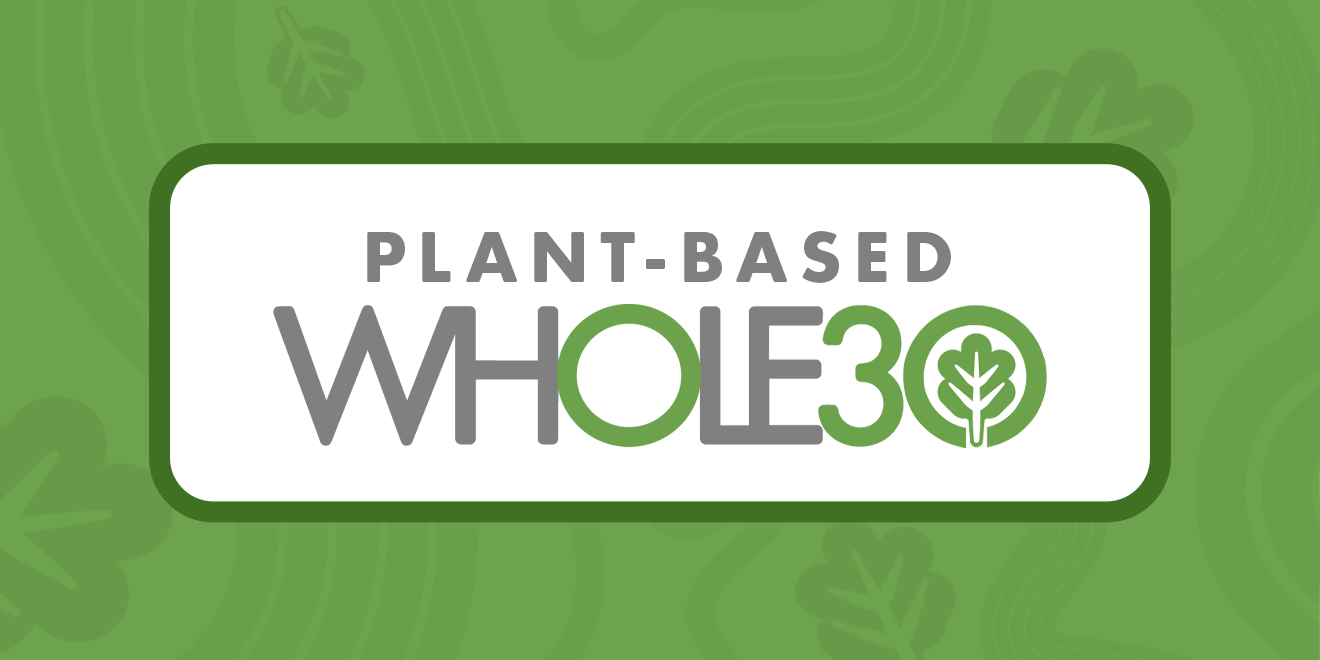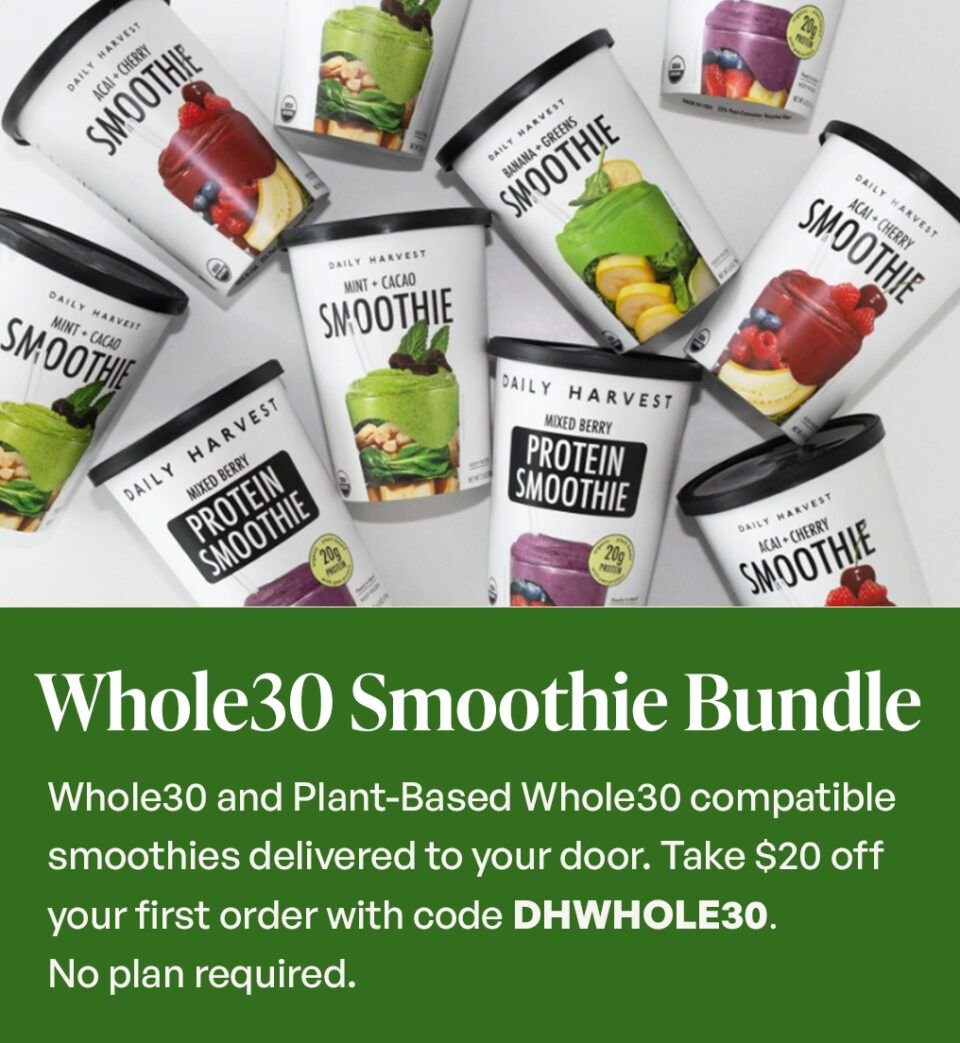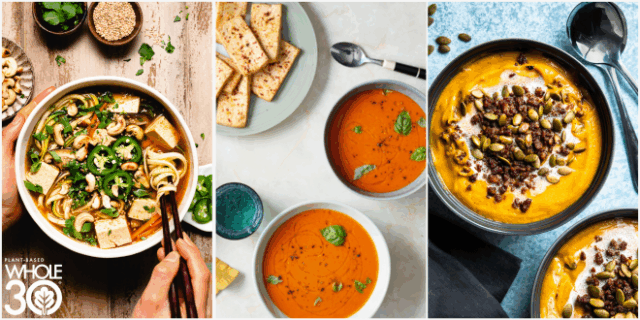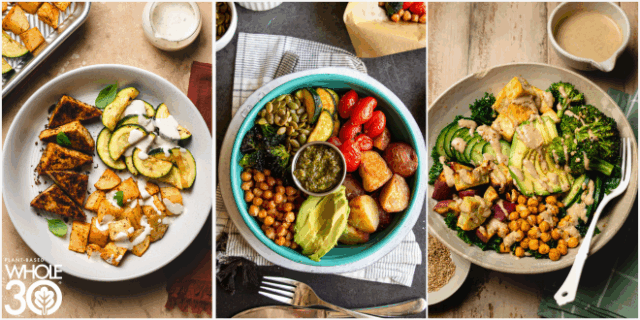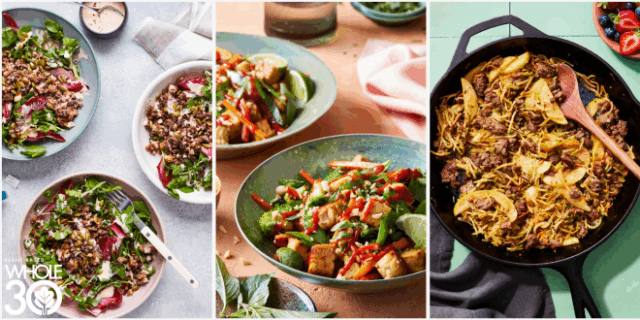Iron is an important nutrient to include in your diet, but it is often a nutrient of concern for many plant-based eaters. That’s why we took the time to highlight the plant-based iron sources you can add to your meals every day. You’ll read all about them below, and you might be surprised to see some of your favorites listed.
Why is iron important
Without iron, our bodies wouldn’t be able to grow and develop properly. One of the main reasons is that iron is used to make hemoglobin. This component of red blood cells carries oxygen from the lungs to the rest of the body. Oxygen is vitally important in keeping our tissues and organs alive and healthy.
Types of iron
Iron comes in two forms. The first is heme iron, which comes from animal sources like flesh, eggs, fish, and sea animals. The second is the non-heme iron found in plant-based sources such as legumes, nuts, seeds, and select vegetables. During the Plant Based Whole30, our bodies only have plant-based iron sources available.
Understanding iron absorption
Non-heme iron is absorbed at a lower rate than heme iron. That used to be viewed as a negative, but in recent years research has found that if our bodies have lower iron stores, we adjust to be able to absorb more iron from non-heme iron sources.
There are three main ways to help support easier iron absorption:
- Combine iron-rich foods with foods high in vitamin C
- Bell peppers
- Chili peppers
- Citrus fruits
- Tomatoes
- Strawberries
- Kiwifruit
- Acerola cherries
- Rose hips
- Parsley
- Kale
- Cooking with cast iron skillets or using a lucky iron fish in cooking.
- Eating sprouted, soaked, and fermented plant-based foods.
How much iron do I need?
According to the National Institute of Health, the daily need for iron in Women 19-50 is 18 milligrams (mg) daily. Men 19-50 need 8 mg daily, and those over 51 need 8 mg daily. However, people eating plant-based diets may need up to 1.8 times more per day than non-plant-based eaters.
I’ll do the math. That bringing the recommended daily allowance (or RDA) for women of childbearing age to 32.4mg and 14.4 mg for other adults.
Two inconclusive studies suggest these recommendations. More research is needed on the exact amount of daily iron needed for vegans and vegetarians. But there is consensus that plant-based eaters need more iron—it’s just unclear how much more is needed.
Iron deficiency
A report from the World Health Organization from 2019 estimates that nearly 29.9% of women aged 15-49 have iron deficiency anemia (1). Iron deficiency is one of the most common deficiencies worldwide for all types of eaters.
Signs of iron deficiency may include
- Fatigue
- Pale skin
- Cold hands and feet
- Dizziness when standing
- Brittle nails
Keep track of your iron levels by visiting your doctor yearly for blood work. Iron is one of the labs they check. And here’s the way you might see it measured:
- Hemoglobin – a protein found in red blood cells
- Hematocrit – the amount of red blood cells
- Serum ferritin – measures the amount of stored iron
In plant-based eaters, the ferritin may be lower. If ferritin is low—with additional symptoms of iron deficiency—action may need to be taken. Look at your lab work records to see if your iron levels stay the same, trending up or down, and discuss with your primary healthcare provider.
Plant-Based sources of iron
There are plenty of foods you can add to your diet to help increase the amount of iron you eat daily. Here are some of the best plant-based iron sources across all food groups to incorporate into your Plant-Based Whole30 and everyday life:
Legumes (½ cup serving)
- Lentils (3.5 mg)
- White beans (3.5 mg)
- Chickpeas (2.5 mg)
- Adzuki beans (2.4 mg)
- Black-eyed peas (2.3 mg)
- Lima beans (2.3 mg)
- Kidney beans (2.1 mg)
- Black beans (1.9 mg)
Soy foods (4 ounce serving)
- Tofu (2.4 mg)
- Tempeh (2.4 mg)
- Edamame (2.6 mg)
Nuts and seeds (¼ cup serving)
- Hemp seeds (4.9 mg)
- Chia seeds (3.3 mg)
- Flaxseeds (3.2 mg)
- Cashews (2 mg)
- Sunflower seeds (1.9 mg)
- Almonds (1.4 mg)
- Pistachios (1.2 mg)
- Pumpkin Seeds (2.9 mg)
- Tahini (1.4 mg in 2 tbsp)
Vegetables (cooked amount listed unless otherwise noted)
- Spinach (3.4 mg in ½ cup)
- Jerusalem artichoke (2.7mg in ½ cup raw)
- Dandelion greens (1.8 mg in 1 cup raw)
- Sun-dried tomato (1.3mg in ¼ cup)
- Kale (1.2 mg in 1 cup raw)
- Sweet potato (1.2 mg in ½ cup)
- Black olives (1.15 mg per ¼ cup raw)
- Beet greens (1 mg in 1 cup raw)
- Brussels sprouts (1 mg in ½ cup)
- Asparagus (0.9 mg in ½ cup)
- Bok choy (0.9 mg in ½ cup)
Additional Sources (1 tablespoon)
- Spirulina (2 mg)
- Moringa (1.6 mg)
Overall, getting enough iron while eating plant-based is doable! Use these foods to help boost your iron intake. If you have concerns about your iron levels, please contact your primary care provider or registered dietitian.

